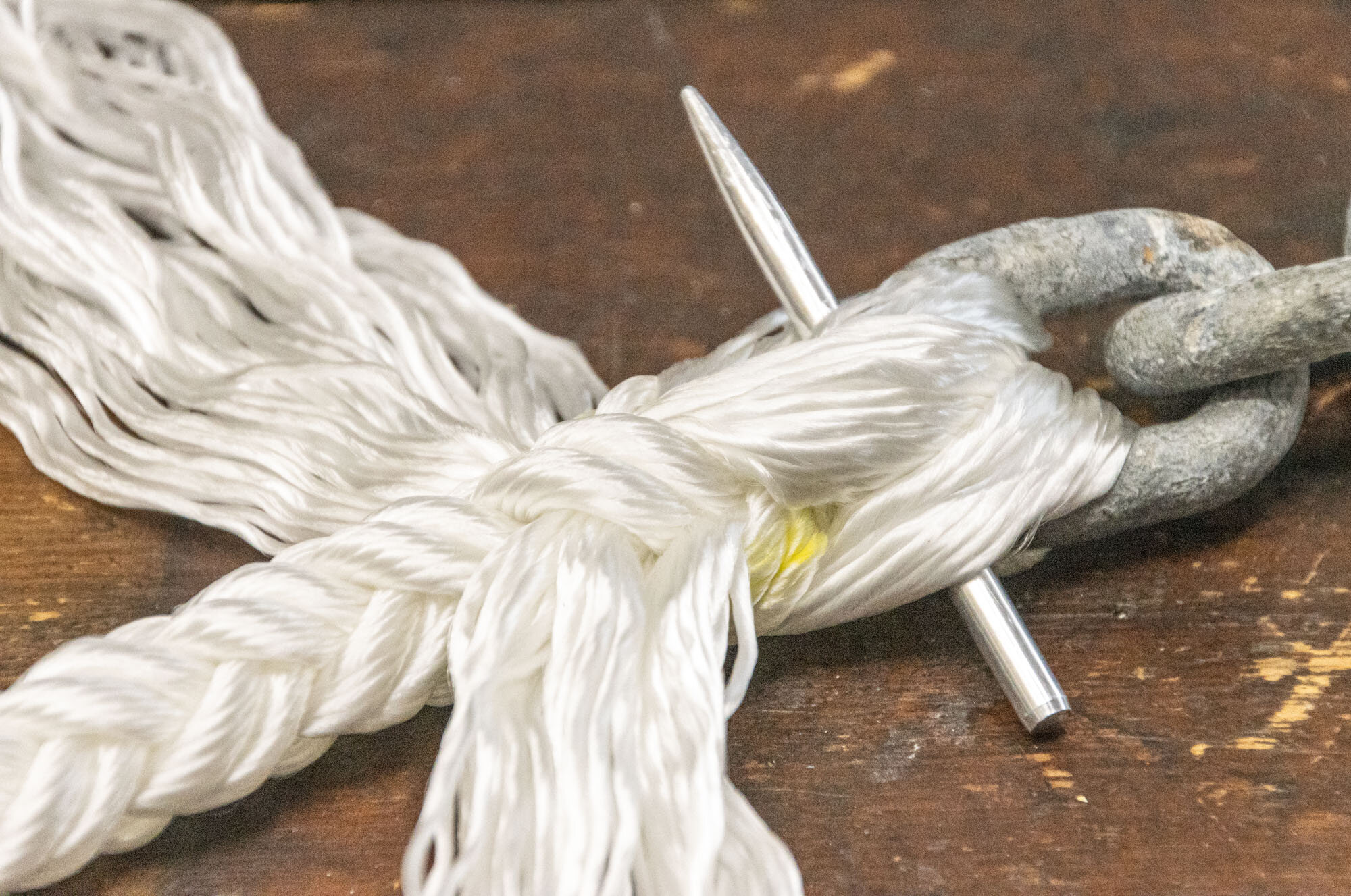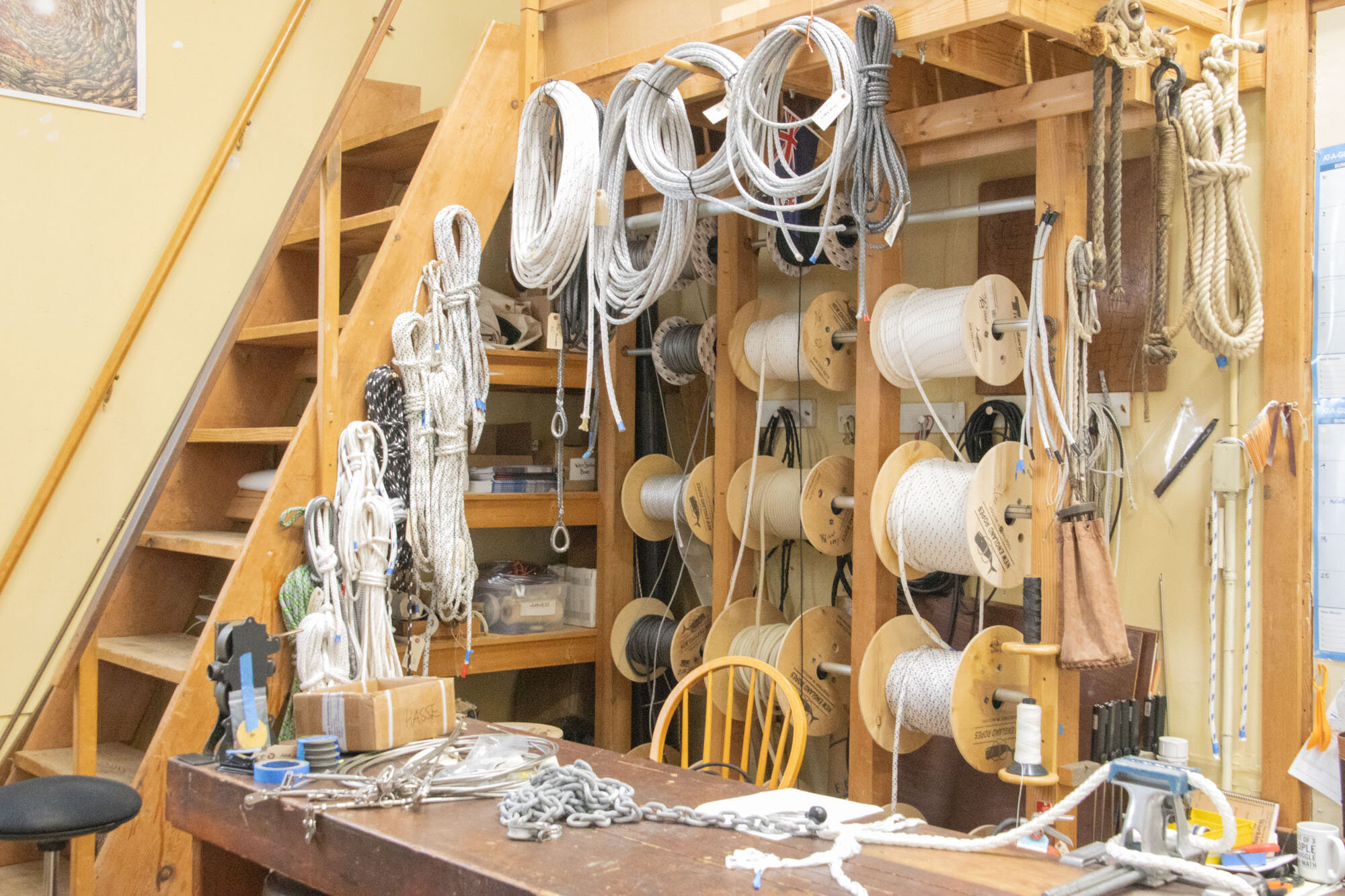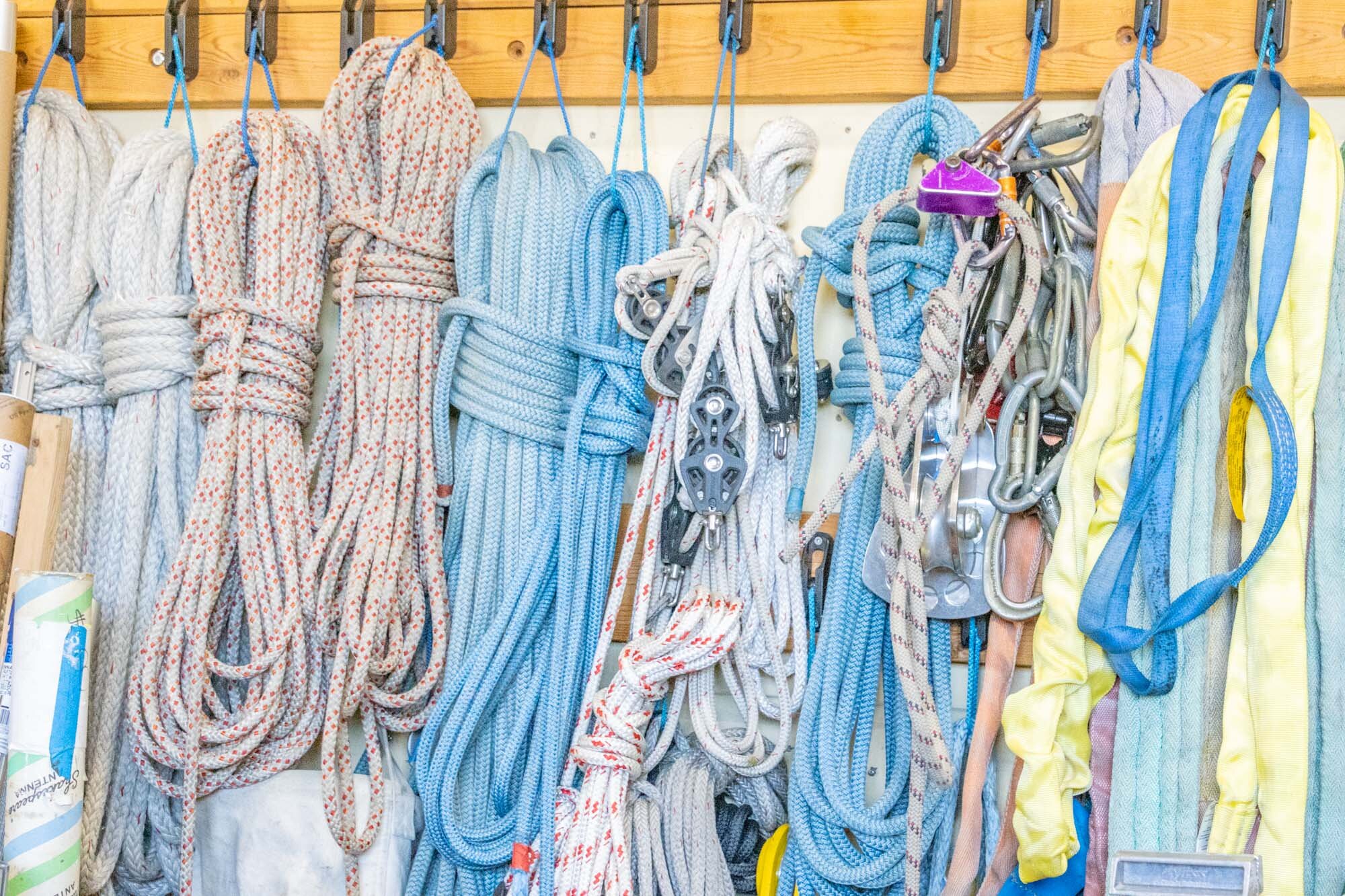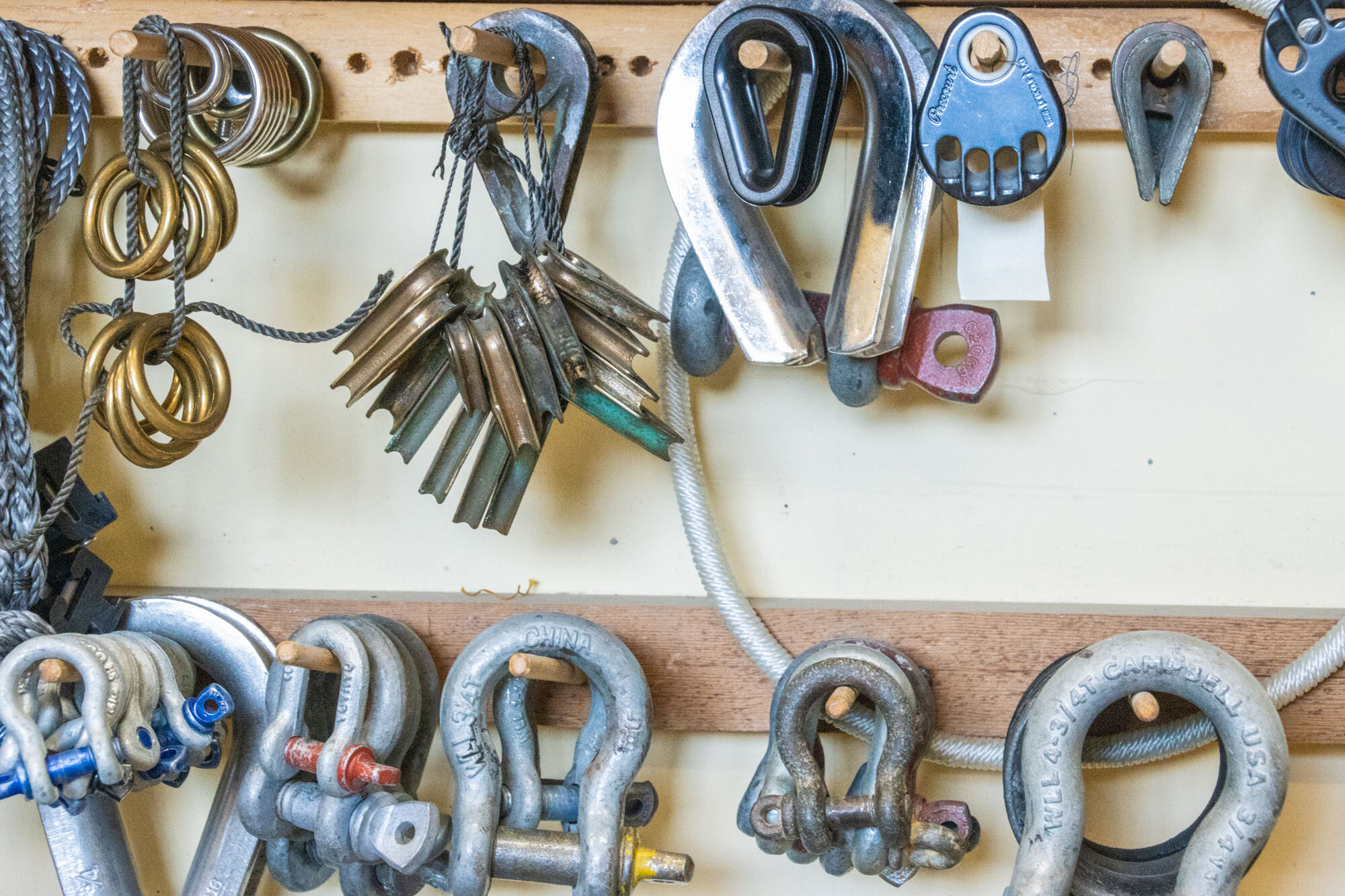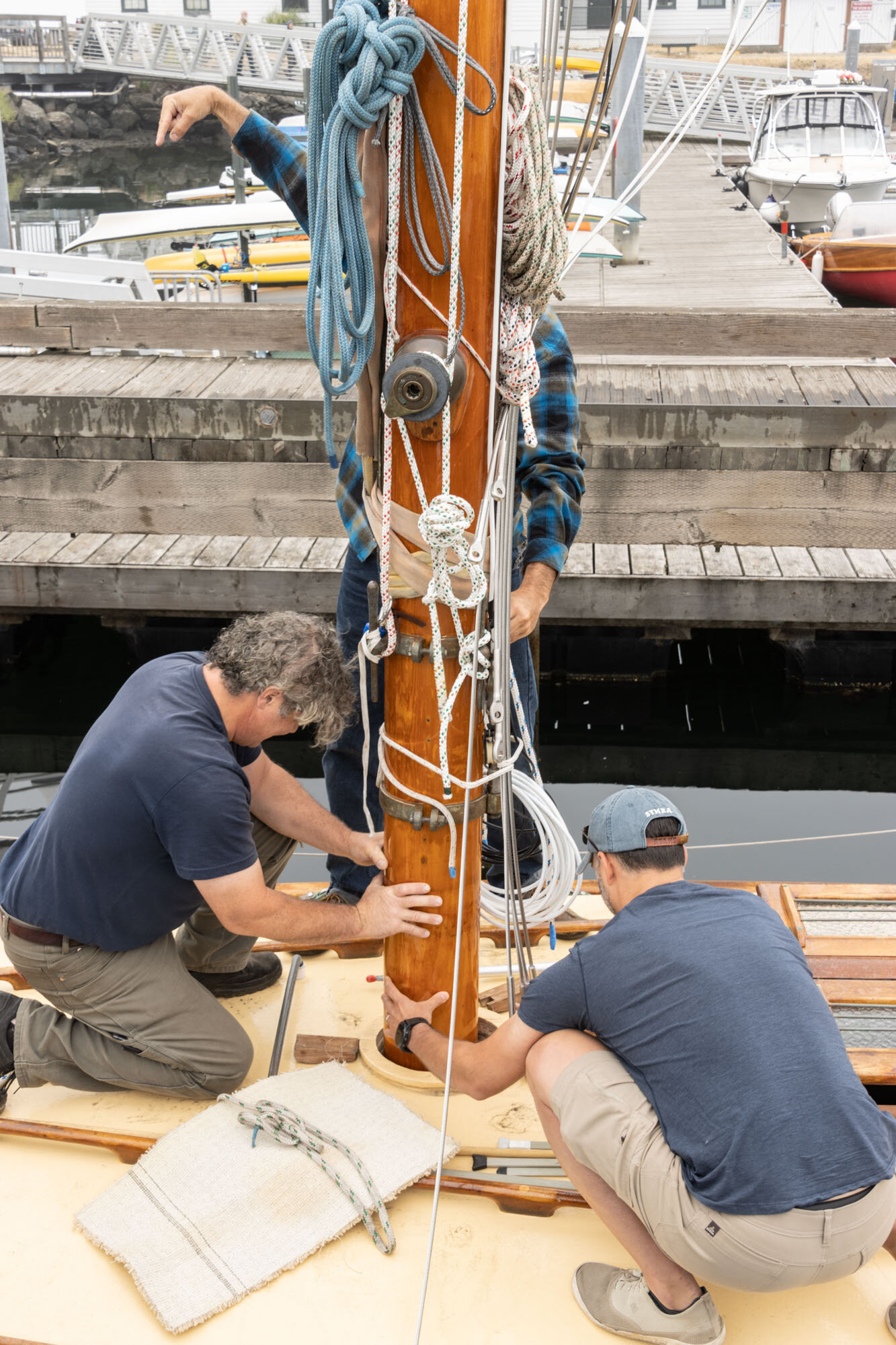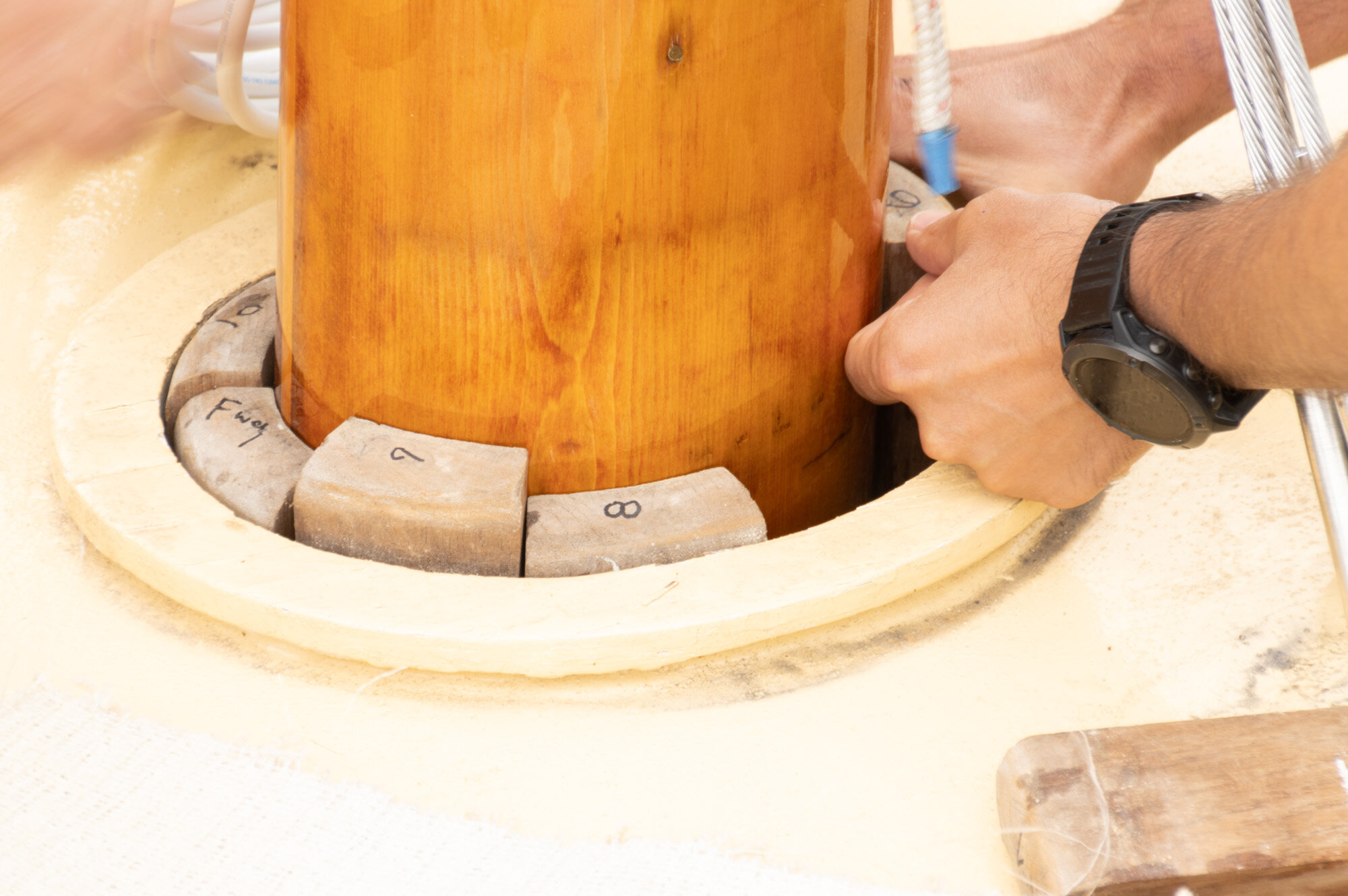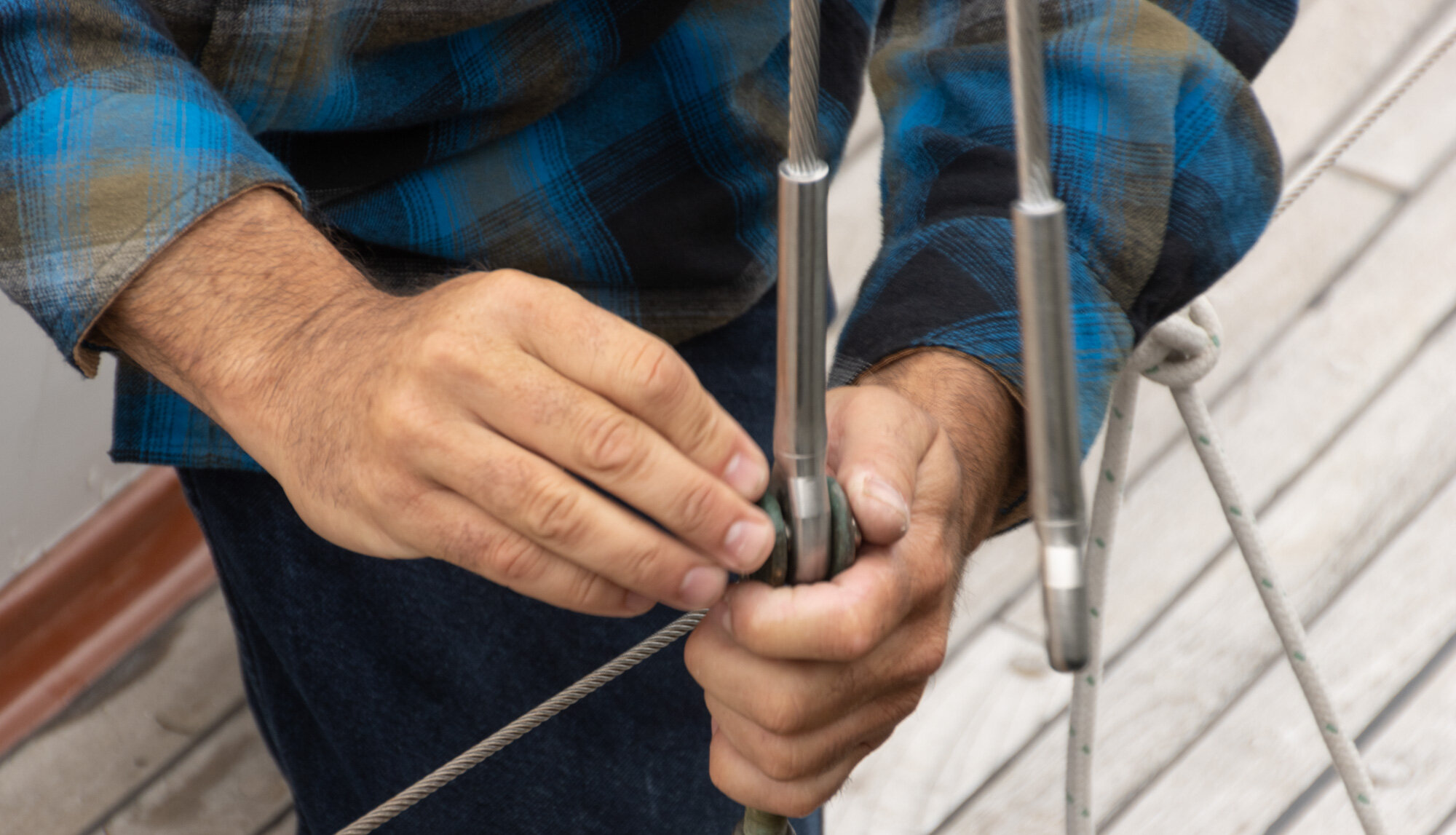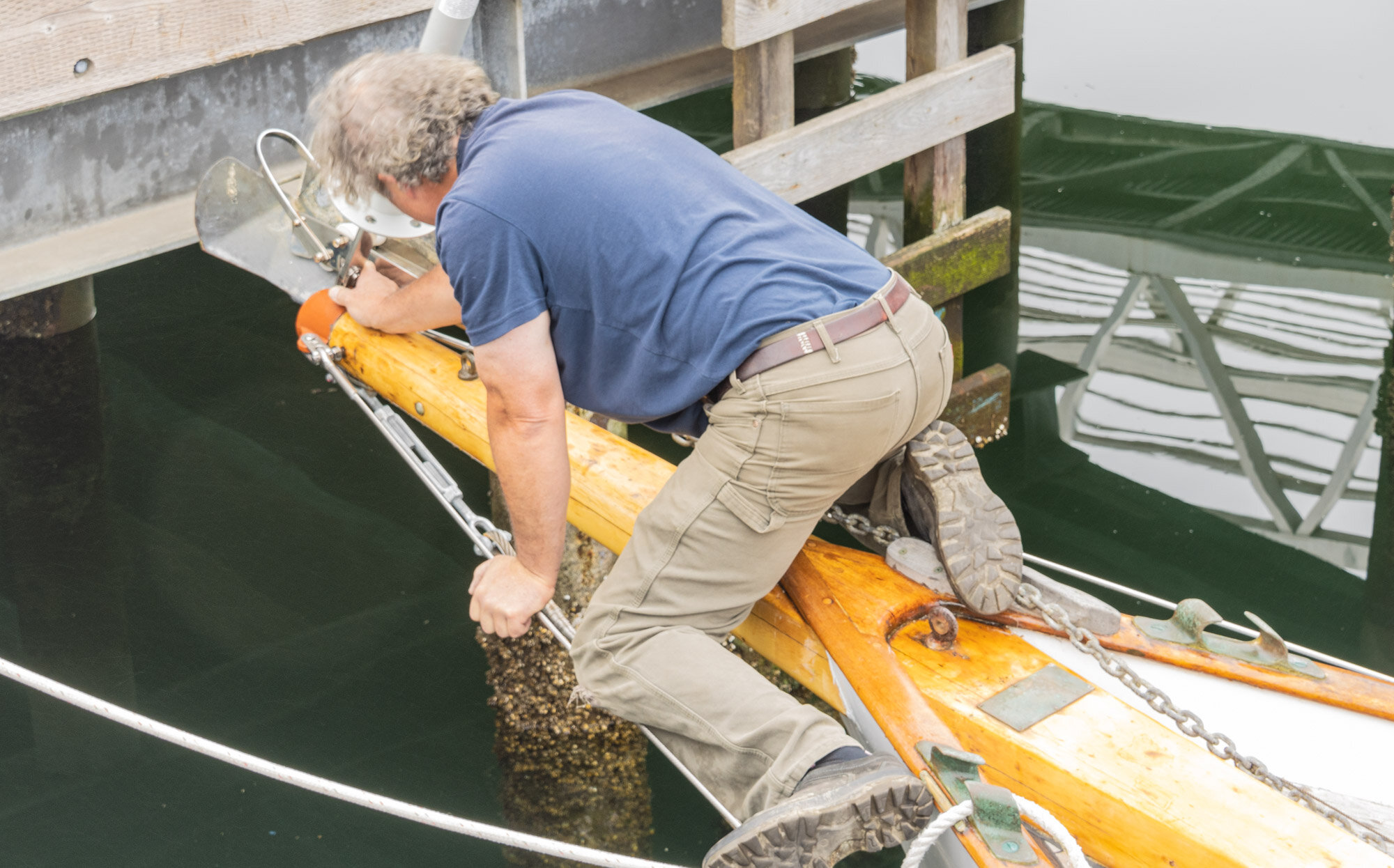Port Townsend - A Mast’s Journey
I’d never really thought much about what it takes to sail a ship. But I learned a lot over a short 24 hour period. Besides the sailors having the necessary skills, the ship must be properly equipped and all of the rigging in perfect condition and assembled accurately. There is a lot to this that I never appreciated.
In the Point Hudson Marina in Port Townsend Kathy and I discovered The Brion Toss Yacht Rigging shop where we were greeted by Ian Weedman. Since The shop’s namesake, Brion Toss, had passed away a year ago, Ian, a full partner, and an expert rigger in his own right, runs the business. Ian was thrilled to allow me take photos, and he gave us a full tour including a bit of a primer on ropes and knots.
Rigging is the system of ropes, cables, and chains which support a ship’s masts and is used for raising, lowering and controlling the sails. Other rigging adjusts the position of the vessel's sails and spars to which they are attached. All around the shop were ropes of all colors and braiding styles, shackles and snaps, chains, and every other piece of equipment that could possibly be needed. I read so much about rigging equipment hoping to learn their names, but the words were so foreign to me I gave up trying to remember them.
Here are some examples of rigging vocabulary.
Stay - a rope that doesn't move, part of the standing rigging, usually located in the fore-aft plane of the vessel.
Shroud - similar to a stay but is located in the athwartship plane of the vessel.
Vang - a rope used to pull something around or down.
Sheet - a rope used to adjust the position of a sail so that it catches the wind properly.
Block - the nautical name for a pulley. It may be fixed to some part of the vessel or spars, or even tied to the end of a rope.
Snatch-block can be closed around a line, to grab the line, rather than threading the end of the line through the block.
Shackle - a piece of metal to attach two ropes, or a block to a rope, or a sail to a rope.
Halyards - the ropes on which one pulls to hoist something.
Ian was very enthusiastic and wanted to show us all around the building, including a second business upstairs that makes and repairs sails. He was very generous with his time and very proud of the work that is done in the business. Ian asked me to take some specific photos including one very, very long room that held a very, very long 55-foot, mast that had just been restored. Ian noticed that we shared his enthusiasm and he mentioned that at 8:00 the next morning this very, very long mast along with its rigging system was going to be placed in its ship, and he invited us to come watch the big event and photograph it. So, of course we did.
When we arrived the next morning, the mast had already been moved out of the shop and was resting horizontally on stands. There had been lot of preparation done in advance to assure that the placement would go smoothly and to prevent any unanticipated problems. In ships with long masts, a crane is often used to “step” the mast, which was the case here. The placement of the loop which attaches to the crane’s hook was just above the balancing point, so when the mast is lifted it shifts to a vertical position. All of the ropes, cables and the furler, which is used for rolling up and securing the sails, have to be fastened to the mast while it’s being moved so they are not damaged or damage the mast during its move to the ship.
Hanging in the air, the mast was moved slowly and carefully by the crane operator. With guidance by Ian and his crew of riggers, the mast was lowered to the block (called the “step”) where it was placed. Once the mast was in place and secured using numbered wooden stays, the furler and remaining connections of the rigging were placed. The ropes and cables were attached to their components. The final step was to disconnect the crane from the mast. One rigger was lifted in a harness while another used one or more ropes (called “halyards”), with the help of a winch, to raise and lower his partner.
I had free reign to photograph the process of stepping the mast. After a while I almost felt like I was part of the crew. This was such a fascinating process to watch. It was clear these riggers and the crane operator had worked together many times and were very comfortable and competent in their work. I learned that the mast had come from an 87-year-old ship that when purchased by the current owner, was in very poor shape. Now the mast was beautifully repaired and refinished, and had a gorgeous, shiny luster that glowed in the sunshine. The ship itself still had work to be done and was on its way to the dock where it would wait for its turn.



